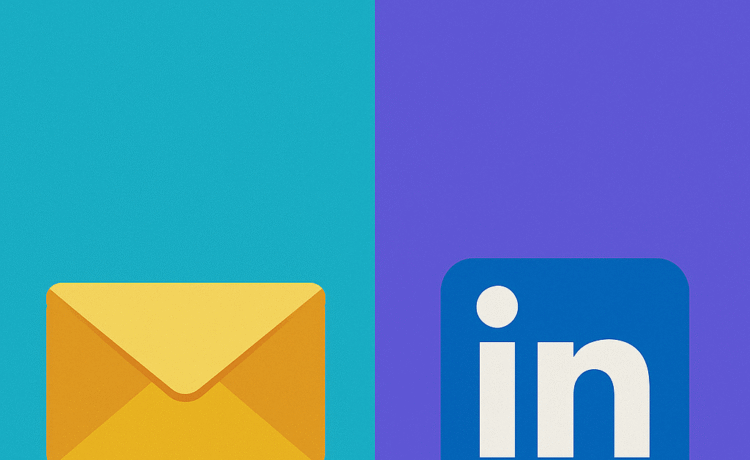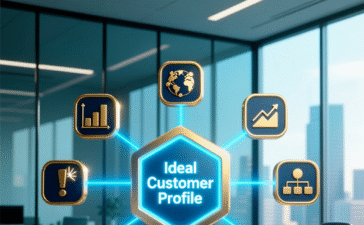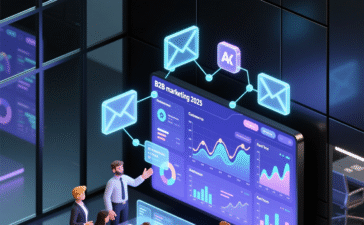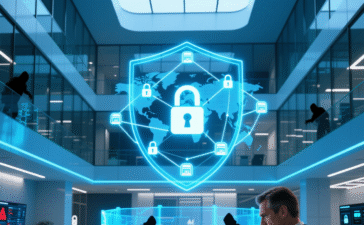In 2025, B2B marketers are more data-driven, tech-savvy, and customer-centric than ever. With evolving algorithms, AI-powered tools, and shifting buyer behaviors, the battle between email marketing and LinkedIn outreach for B2B lead generation is hotter than ever.
So, which platform should you prioritize in your 2025 strategy?
Spoiler: It’s not a simple either/or decision. But understanding the strengths, limitations, and future trends of email and LinkedIn can help you allocate your time, budget, and resources more effectively.
Let’s break it down.
The State of B2B Lead Generation in 2025
Before diving into the platforms, let’s set the stage.
According to HubSpot’s 2025 B2B Marketing Report:
- 78% of B2B buyers research online before contacting a sales rep.
- 63% of decisions are influenced by personalized outreach.
- AI-driven automation is now used by 82% of high-performing marketing teams.
With information overload and shorter attention spans, relevance, timing, and trust are the new currency of B2B lead gen.
Now, let’s compare the two heavyweights: email and LinkedIn.
Email Marketing in 2025: Still a Powerhouse?
✅ Strengths of Email in 2025
- High ROI
- For every $1 spent on email marketing, businesses earn an average of $42 in return (DMA, 2025).
- One of the highest ROI channels in B2B marketing.
- Owned Audience
- Your email list is your asset. Unlike social platforms, you control access and delivery (within spam filter limits).
- Advanced Personalization & Automation
- AI tools now enable hyper-personalized subject lines, dynamic content, and behavioral triggers.
- Example: Sending a follow-up email based on a prospect’s whitepaper download or webinar attendance.
- Scalability
- Easily scale campaigns from 100 to 100,000+ contacts with minimal added cost.
- Integration with CRM & Sales Tools
- Seamless sync with HubSpot, Salesforce, and outreach platforms like Mailchimp, Klaviyo, or Sendinblue.
❌ Challenges in 2025
- Inbox Overload & Spam Filters
- Average professionals receive 120+ emails daily. Standing out is harder.
- Gmail’s updated AI filters now aggressively flag promotional content.
- List Decay & Compliance
- Email lists decay at ~22.5% annually (OptinMonster, 2025).
- GDPR, CCPA, and new global privacy laws require stricter opt-in processes.
- Lower Open Rates for Cold Outreach
- Cold email open rates average 18–25%, with reply rates under 3% without personalization.
✅ Strengths of LinkedIn Outreach
- Buyer Presence & Intent Data
- Over 950 million professionals use LinkedIn, with 61 million decision-makers.
- Users are on the platform for business — signaling intent to connect, learn, and buy.
- Social Proof & Credibility
- A personalized LinkedIn message feels less intrusive than a cold email.
- Profiles, endorsements, and mutual connections build instant trust.
- Content-Driven Lead Gen
- Sharing thought leadership posts, videos, and articles can attract inbound leads.
- Top-performing B2B brands generate 3x more leads from organic LinkedIn content than email (LinkedIn Marketing Solutions, 2025).
- AI-Powered Sales Tools
- LinkedIn Sales Navigator now uses AI to recommend leads, suggest messaging, and predict engagement likelihood.
- Integration with Outreach, Apollo, and HubSpot enables automated yet human-like sequences.
- Higher Response Rates
- Personalized LinkedIn InMail response rates average 30–45%, far exceeding cold email.
❌ Challenges in 2025
- Platform Saturation
- Everyone is on LinkedIn. Prospects are bombarded with connection requests and sales pitches.
- Cost of InMail
- Premium features like InMail cost money. Scaling outreach can get expensive.
- Algorithm Dependence
- Organic reach for posts depends on engagement. Without consistent content, visibility drops.
- Time-Intensive
- High-touch LinkedIn outreach requires more effort than bulk email campaigns.
Head-to-Head: Email vs LinkedIn in 2025
| Best For | Nurturing, scalability, automation | Outreach, trust-building, intent signals |
| Avg. Response Rate (Cold) | 1–3% | 20–45% (InMail) |
| Cost to Scale | Low (after list build) | Medium to High (InMail, Premium) |
| Personalization Level | High (with AI) | Very High (social context) |
| Lead Quality | Medium to High (if segmented) | High (intent + profile data) |
| Integration with CRM | Excellent | Good (via Sales Nav & APIs) |
| Ownership of Audience | Full control | Platform-dependent |
The Winning Strategy for 2025: Use Both — But Strategically
The real answer isn’t email or LinkedIn — it’s email AND LinkedIn, used at the right stage of the buyer’s journey.
🎯 Here’s How to Combine Them for Maximum Impact:
1. Top of Funnel: LinkedIn for Discovery & Engagement
- Use LinkedIn to:
- Publish thought leadership content.
- Engage with prospects via comments and DMs.
- Run targeted InMail campaigns to high-intent profiles.
2. Middle of Funnel: Email for Nurturing
- Capture leads via LinkedIn lead gen forms or content offers.
- Feed them into segmented email workflows:
- Drip campaigns
- Case studies
- Product demos
3. Bottom of Funnel: Multi-Channel Touchpoints
- Combine a personalized email with a LinkedIn connection request.
- Example:
- Day 1: Send a value-driven email with a case study.
- Day 3: Connect on LinkedIn with a custom note referencing the email.
- Day 5: Follow up with a short video message via email.
This omnichannel approach increases reply rates by up to 70% (Gartner, 2025).
Future Trends Shaping B2B Lead Gen in 2025
- AI-Powered Personalization
- Both email and LinkedIn tools now use AI to analyze tone, timing, and content preferences.
- Privacy-First Marketing
- Zero-party data (info shared willingly) is replacing third-party cookies.
- Transparency and value exchange are key.
- Video Messaging
- 1:1 video emails and LinkedIn video notes increase engagement by 4x.
- Social Selling Maturity
- Sales teams are expected to have active, content-driven LinkedIn profiles.
- Integration of Conversational AI
- Chatbots on LinkedIn and email autoresponders now qualify leads in real time.
Final Verdict: Where Should You Focus in 2025?
✅ Focus on LinkedIn if:
- You’re building brand authority.
- Your ICP is active on the platform.
- You want higher-quality, faster responses from decision-makers.
✅ Focus on Email if:
- You have a warm list or content funnel.
- You need scalable, automated nurturing.
- You’re in a long sales cycle industry (e.g., SaaS, enterprise tech).
✅ Best Approach: Integrate Both Use LinkedIn to start conversations and email to deepen relationships.
Action Plan: Optimize Your 2025 B2B Lead Gen Strategy
- Audit Your Current Channels
Track metrics: open rates, reply rates, conversion rates, and CAC. - Build a Multi-Channel Sequence
Example:- LinkedIn connection → Value-driven message → Follow-up email → Retarget via content.
- Leverage AI Tools
- Email: HubSpot, Lavender, Sendinblue
- LinkedIn: Sales Navigator, Expandi, Dripify
- Invest in Content That Converts
- Create LinkedIn-native content (videos, carousels, polls).
- Offer gated resources (ebooks, webinars) to grow your email list.
- Test, Measure, Iterate
Run A/B tests on messaging, timing, and channel order.




